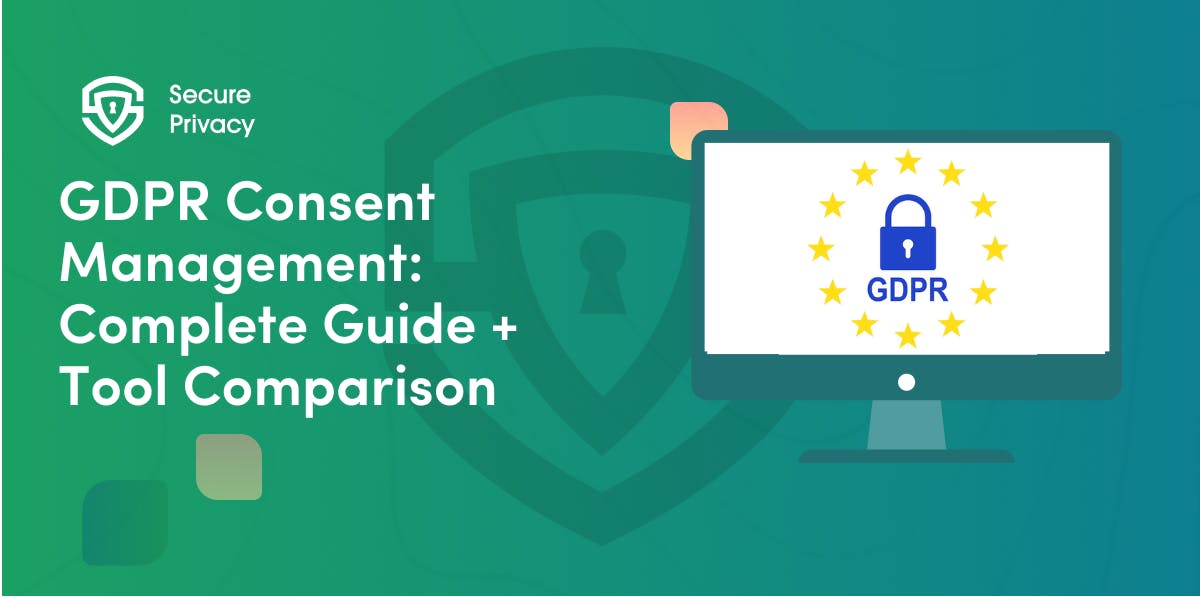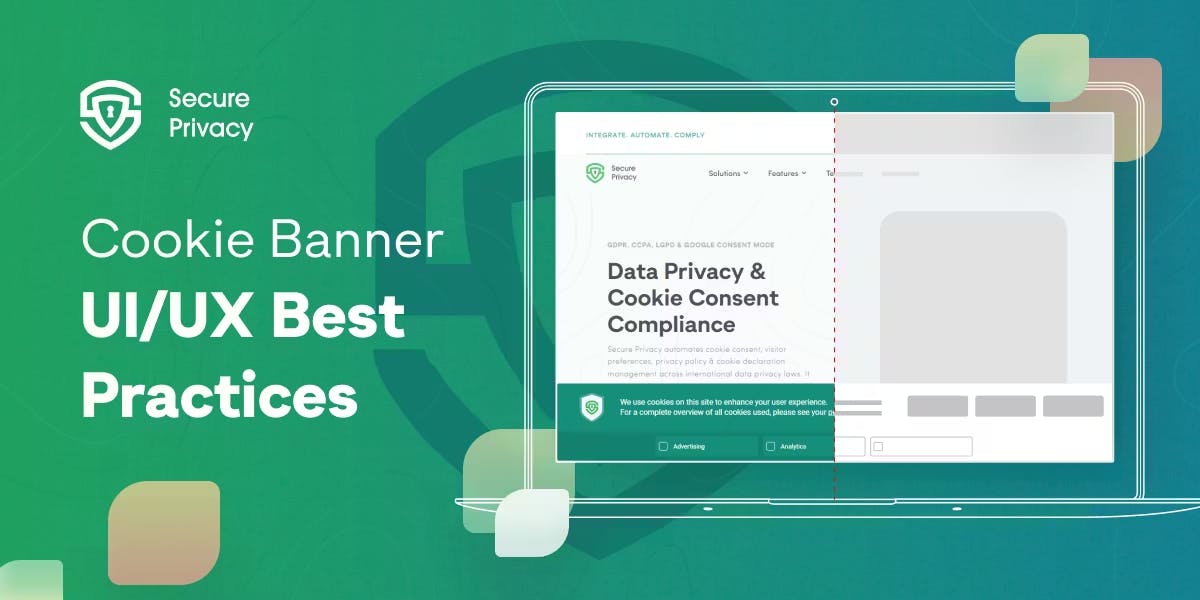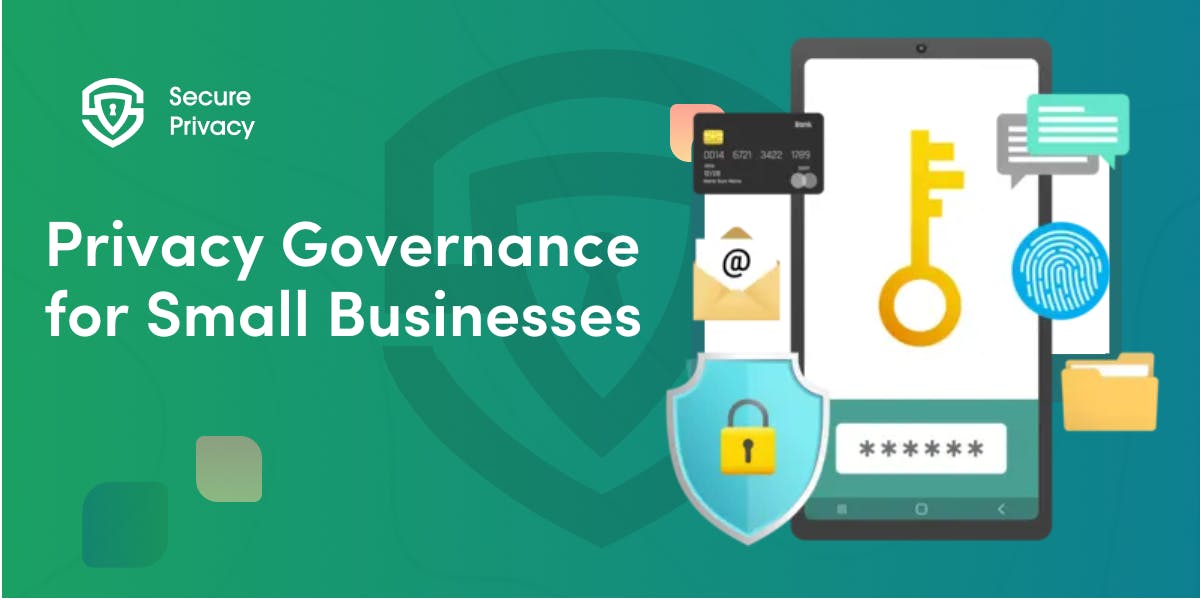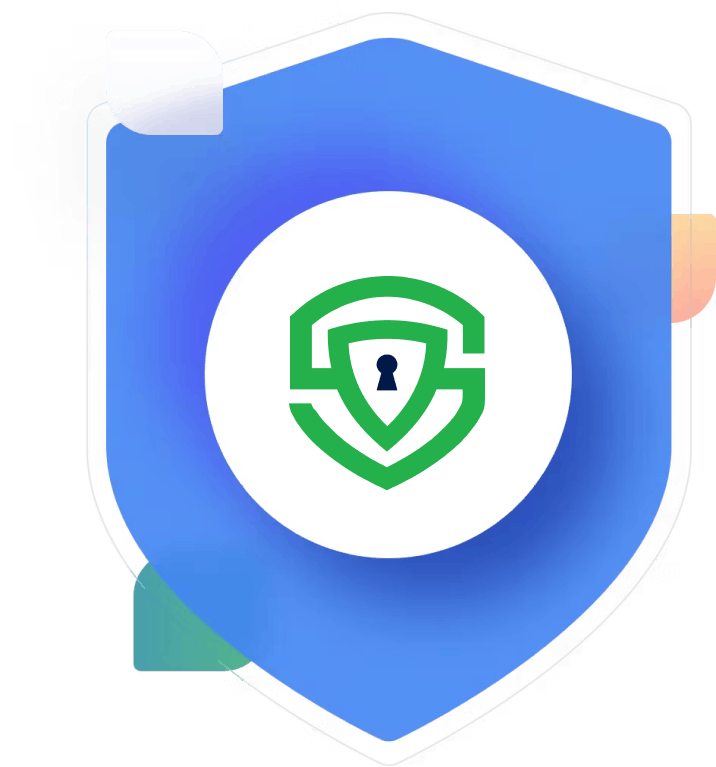How SaaS Companies Can Stay Compliant with Global Privacy Laws
Your enterprise deal just hit a wall. The contract sits unsigned with one final hurdle: "Demonstrate GDPR, CCPA, and SOC 2 compliance within 30 days." For growing SaaS businesses, SaaS privacy compliance requirements transform from abstract legal concepts into urgent operational reality when six-figure deals hang in the balance.
Privacy compliance isn't just about avoiding fines. It's the trust signal enterprise customers demand before entrusting you with their data. In this guide, you'll learn which privacy laws apply to your SaaS business, what operational changes you need, and how automation tools help you scale compliance without scaling headcount. Whether you're a CTO evaluating your first SOC 2 audit or a compliance officer building your privacy program, you'll find actionable frameworks for meeting SaaS privacy compliance requirements.
Why Privacy Compliance Matters for SaaS in 2025
GDPR violations cost up to €20 million or 4% of global revenue — whichever hurts more. CCPA penalties range from $2,500 to $7,500 per violation. But the real cost is the customer you never closed because you couldn't check the compliance box on their vendor questionnaire.
Enterprise buyers require privacy certifications before signing contracts. Your sales team knows this pain — deals stall in procurement while security teams review your compliance documentation. Competitors with SOC 2 Type II reports and GDPR attestations sail through vendor approval in days, not months.
SaaS companies face unique challenges. Multi-tenant architectures demand bulletproof data isolation. Continuous deployment requires privacy-by-design at every release. Third-party APIs create sprawling data flows that compliance teams must map and manage.
Privacy enforcement is accelerating globally. European authorities issued over €3 billion in GDPR fines since 2018. California's Privacy Protection Agency began active enforcement in 2023. Brazil's ANPD ramped up LGPD audits. By mid-2025, sixteen U.S. states have enacted comprehensive privacy laws, each with different requirements.
Key Privacy Laws for SaaS Companies
Understanding which regulations apply is foundational. Geography matters, but not how many founders assume. You don't need EU presence to fall under GDPR — just EU residents using your product.
GDPR: The Global Gold Standard
The General Data Protection Regulation reaches any SaaS company processing personal data of EU residents, regardless of server location or incorporation.
Critical GDPR requirements:
Every processing activity needs lawful basis — consent, contractual necessity, or legitimate interests. Generic "by using our service" statements don't work. Consent must be explicit, informed, and freely given.
Data minimization is mandatory. Collect only what you genuinely need. Data subject rights give users comprehensive control — access, correction, deletion, portability, and objection. Your systems must support these within 30-day timelines.
Security measures are non-negotiable: encryption for data at rest and in transit, role-based access controls, regular security audits, and multi-factor authentication. Privacy by design means embedding protection into architecture from day one. Data breaches require notification to authorities within 72 hours.
CCPA/CPRA: California and Beyond
California's laws reach businesses with revenue over $25 million, processing data of 50,000+ California residents, or deriving 50%+ revenue from selling data.
California requires:
Consumer rights include access, deletion, correction, opting out of data sales, and limiting use of sensitive information. The "Do Not Sell or Share" link must appear prominently if applicable.
Sensitive personal information gets enhanced protection under CPRA—Social Security numbers, financial data, precise geolocation, health data, and biometrics require careful handling.
Data Processing Agreements with all vendors are mandatory. Privacy policies must disclose data categories, processing purposes, third-party sharing, retention periods, and rights instructions. Response deadline: 45 days.
LGPD: Brazil's Framework
Brazil's Lei Geral de Proteção de Dados mirrors GDPR principles with local requirements. If you serve Brazilian customers, LGPD applies—enforcement has ramped up significantly.
Core principles include purpose limitation, necessity, data quality, transparency, security, and accountability. A Portuguese-speaking Data Protection Officer is mandatory for Brazilian operations.
PIPEDA: Canada's Standards
Canada's Personal Information Protection and Electronic Documents Act applies to commercial data processing. Ten privacy principles govern: accountability, purpose identification, consent, limiting collection/use/disclosure/retention, accuracy, safeguards, openness, individual access, and challenging compliance.
Breach reporting requires notifying the Privacy Commissioner and affected individuals about breaches involving "real risk of significant harm" as soon as feasible.
Additional Frameworks
Australia's Privacy Act (13 Australian Privacy Principles) applies to organizations with turnover over $3 million. South Africa's POPIA requires appointing an Information Officer and maintaining eight essential conditions including accountability, processing limitation, and data subject participation rights.
Core Compliance Requirements
Implementation is where theory meets reality. Every SaaS business needs five core capabilities.
Lawful Basis for All Processing
Consent means freely given, specific, informed agreement. Pre-checked boxes don't count. Contract necessity covers processing required for service delivery. Legitimate interests require documented assessments weighing your interests against user privacy. Legal obligation covers legally mandated processing like tax retention.
Modern Cookie Consent
Pre-consent blocking is mandatory. All non-essential cookies must be blocked until consent. Analytics, advertising, and marketing can't run before consent.
Fair choice architecture requires equally prominent "Accept All" and "Reject All" options. Granular control lets users customize by category. Consent logging maintains comprehensive audit trails. Geo-targeting applies appropriate frameworks automatically.
Transparent Privacy Policies
Essential elements include data controller identity, data categories collected, specific processing purposes, legal basis, retention periods, third-party recipients, international transfer details, user rights with exercise instructions, cookie disclosures, security measures, and breach procedures.
Use clear, plain language accessible to average users — target eighth-grade reading level.
Data Subject Rights (DSARs)
Support right of access (data copies), rectification (corrections), erasure (deletion), restrict processing, data portability (machine-readable format), and object (to processing or marketing).
Verify requester identity rigorously. Respond within 30-45 days. Locate all data across systems, databases, and backups. Redact third-party information. Document all requests.
Data Retention Policies
Categorize data by type with specific retention timelines. Financial records might require seven years. Support tickets might need two years. Implement automated deletion when periods expire. Use secure deletion methods with audit logging.
International Transfers
Standard Contractual Clauses provide pre-approved terms for international transfers. Conduct Transfer Impact Assessments evaluating whether destination country laws compromise protections. Complete detailed annexes describing parties, data categories, and security measures.
Vendor Management
Every vendor accessing personal data needs Data Processing Agreements specifying processing scope, security measures, subprocessor procedures, breach notification, and audit rights. Maintain updated subprocessor lists. Conduct vendor due diligence on security capabilities.
Automating Privacy Compliance
Manual processes don't scale. Automation platforms reduce burden while improving consistency.
Consent Management Platforms
Leading CMPs provide automated cookie scanning, geo-targeting with appropriate legal frameworks, Google Consent Mode v2 support, multi-language localization, granular consent controls, comprehensive logging, pre-consent blocking, and A/B testing for optimization.
DSAR Automation
Automated platforms handle request intake, identity verification, data discovery across systems, response compilation, redaction, workflow management, audit trails, and integration with Salesforce, HubSpot, AWS, Google Cloud, and Microsoft 365.
Privacy Tools
Policy generators create customized documentation. Records of Processing Activities (RoPA) systems automate GDPR Article 30 documentation. Integration with business systems enables automated data discovery and consent enforcement.
SaaS Compliance Checklist
Data Foundation:
☐ Conduct data audit identifying all personal data
☐ Document data flows from collection through deletion
☐ Identify all third-party processors
☐ Map data to processing purposes
☐ Classify data by sensitivity
Legal Framework:
☐ Identify applicable privacy laws
☐ Establish lawful basis for each activity
☐ Implement consent management
☐ Create comprehensive privacy policy
☐ Deploy cookie consent banner
User Rights:
☐ Implement access request processes
☐ Establish deletion workflows
☐ Create correction procedures
☐ Develop portability capabilities
☐ Document all requests
Security:
☐ Implement encryption at rest and in transit
☐ Establish role-based access controls
☐ Conduct regular security assessments
☐ Deploy multi-factor authentication
☐ Create breach response plan
Vendors:
☐ Maintain current subprocessor list
☐ Execute DPAs with all processors
☐ Conduct vendor due diligence
☐ Implement change notification procedures
Documentation:
☐ Create Records of Processing Activities
☐ Conduct Data Protection Impact Assessments
☐ Establish retention schedule
☐ Designate DPO if required
Training & Monitoring:
☐ Provide privacy training to all staff
☐ Conduct regular compliance audits
☐ Monitor regulatory changes
☐ Track privacy metrics
Top SaaS Privacy Compliance Platforms (2025)
Secure Privacy
For: Growing SaaS, agencies, SMBs
Pricing: Free to $199/month (transparent tiers)
Strengths: Rapid deployment (< 1 day), 90%+ cost savings vs. enterprise, intuitive setup
Features: Cookie consent, geo-targeting, Google Consent Mode v2, 55+ laws, DSAR automation, SOC 2, ISO 27001.
OneTrust
For: Fortune 500, large enterprises
Pricing: $10,000-$20,000+/month (custom)
Strengths: Comprehensive features, global regulatory intelligence
Features: Privacy management, consent orchestration, data discovery, DSAR automation, AI governance
Osano
For: Mid-market companies
Pricing: $99/month+ with "No Fines" guarantee
Strengths: Ease of use, strong support, B-Corp certified
Features: Cookie consent, DSAR automation, vendor risk, RoPA, 95+ regulations
Enzuzo
For: Startups, agencies, solopreneurs
Pricing: Free to $99/month (affordable tiers)
Strengths: Feature-rich free plan, quick setup, agency-friendly
Features: Cookie banner, policy generators, DSAR workflows, multi-domain management
Vanta
For: Security-focused SaaS
Pricing: Custom
Strengths: Continuous monitoring, audit automation
Features: SOC 2, ISO 27001, GDPR, HIPAA compliance, 55+ integrations, real-time dashboard
Privacy Trends Shaping 2025
US State Law Expansion
Sixteen states now have comprehensive privacy laws. Eight new laws took effect in 2025: Delaware DPDPA, Iowa ICDPA, New Hampshire SB255, New Jersey SB332, Tennessee TIPA, with Minnesota, Maryland, and Kentucky following.
Emerging themes include stricter minor protections, enhanced biometric restrictions, simplified opt-outs, lowered thresholds, and automated decision-making requirements.
EU Data Act Impact
Taking effect September 12, 2025, the Data Act requires switching rights (customers can switch providers with two-month notice), no switching charges (prohibited after January 2027), data portability in machine-readable formats, and technical interoperability through open APIs.
This fundamentally disrupts SaaS vendor lock-in strategies and contract structures.
AI Governance Convergence
AI systems must comply with GDPR, CCPA, and other frameworks. The EU AI Act requires Fundamental Rights Impact Assessments for high-risk systems. Enhanced transparency makes AI decision-making explainable. Privacy-enhancing technologies like differential privacy and federated learning become standard.
Privacy Automation Evolution
AI-powered privacy operations bring automated consent optimization, intelligent DSAR processing, and server-side consent management. Continuous compliance monitoring provides real-time visibility. Privacy-as-code applies infrastructure-as-code approaches to privacy controls.
Turn Compliance Into Competitive Advantage
Privacy compliance accelerates enterprise sales when properly implemented. It's the trust signal that wins competitive deals and prevents costly breaches.
Start with your data inventory. Map flows, identify legal bases, and implement core capabilities — consent management, DSAR automation, vendor management, and retention policies. Choose automation tools matching your stage rather than over-engineering.
The regulatory landscape continues evolving. Companies building adaptive compliance programs using automation, maintaining current documentation, and treating privacy as ongoing practice will navigate changes confidently while competitors scramble.
Your privacy compliance program is your reputation made concrete. Build it well.
FAQ
What privacy laws apply to SaaS companies?
SaaS companies must comply based on customer locations, not company location. GDPR for EU residents, CCPA/CPRA for California thresholds, LGPD for Brazilian customers, PIPEDA for Canadian commerce. Most global SaaS businesses comply with multiple frameworks.
How can SaaS startups ensure GDPR compliance?
Start with data inventory, establish lawful bases, implement cookie consent with pre-blocking, create accurate privacy policies, build DSAR processes, and sign DPAs with all vendors. Consider consent management platforms early.
What's the difference between GDPR and CCPA?
GDPR requires proactive consent while CCPA provides opt-out rights. GDPR applies based on data subject location; CCPA uses business thresholds. GDPR has stricter consent and shorter breach timelines. Most implement GDPR-level protections globally.
What tools automate SaaS privacy compliance?
Consent management platforms, DSAR automation tools, privacy policy generators, RoPA systems, and vendor management platforms. Leading solutions: Secure Privacy (growing companies), OneTrust (enterprise), Osano (mid-market), Enzuzo (startups).
Do I need SOC 2 certification?
Enterprise customers increasingly require SOC 2 Type II before signing contracts, making it commercially necessary for B2B SaaS targeting enterprise markets. Start when enterprise sales become significant or customers explicitly request it.
How long should SaaS companies retain data?
Depends on data type and regulations. Financial records: seven years. Personal data: only as long as necessary for stated purpose. Create retention schedules with specific timelines and business justifications. Implement automated deletion.
What are penalties for privacy violations?
GDPR: up to €20 million or 4% of global revenue. CCPA: $2,500-$7,500 per violation. Beyond fines, violations damage reputation, lose customer trust, and create legal liability through class actions.
How do I handle international data transfers?
Use Standard Contractual Clauses with Transfer Impact Assessments. Consider EU-US Data Privacy Framework if certified. Document all transfers in RoPA. Review quarterly as legal landscape evolves.
Get Started For Free with the
#1 Cookie Consent Platform.
No credit card required

GDPR Consent Management: Complete Guide + Tool Comparison
Your website could be costing you €20 million. Every cookie that loads before user consent, every "accept all" button without an equally prominent reject option — these aren't minor oversights. They're violations that data protection authorities are actively hunting.
- Legal & News
- Data Protection

How to Design High-Performing Cookie Banners in 2026
“You're one click away from a €325 million fine”. That's what Google learned in September 2025 when French regulators hit them for cookie consent violations. The message is clear: cookie banner design in 2026 isn't about getting extra clicks anymore — it's about survival.
- Legal & News
- Data Protection

Privacy Governance for Small Businesses: Step-by-Step Guide
You're a 20-person company. A customer asks for their data. Your marketing team just added a new tracking pixel. Your CRM vendor updated their terms. And you just realized you might need to comply with GDPR, CCPA, or both.
- Legal & News
- Data Protection

